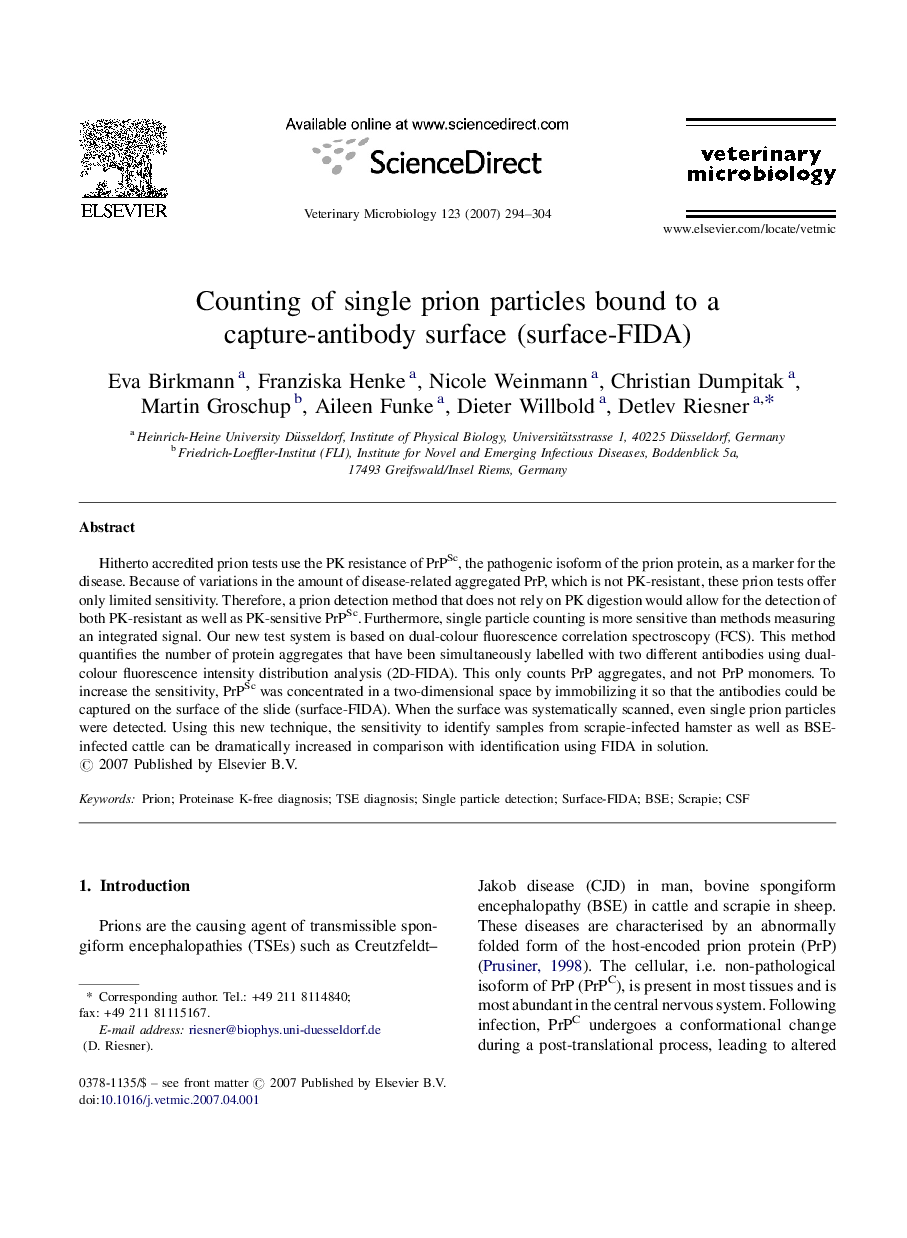| کد مقاله | کد نشریه | سال انتشار | مقاله انگلیسی | نسخه تمام متن |
|---|---|---|---|---|
| 2469201 | 1112044 | 2007 | 11 صفحه PDF | دانلود رایگان |

Hitherto accredited prion tests use the PK resistance of PrPSc, the pathogenic isoform of the prion protein, as a marker for the disease. Because of variations in the amount of disease-related aggregated PrP, which is not PK-resistant, these prion tests offer only limited sensitivity. Therefore, a prion detection method that does not rely on PK digestion would allow for the detection of both PK-resistant as well as PK-sensitive PrPSc. Furthermore, single particle counting is more sensitive than methods measuring an integrated signal. Our new test system is based on dual-colour fluorescence correlation spectroscopy (FCS). This method quantifies the number of protein aggregates that have been simultaneously labelled with two different antibodies using dual-colour fluorescence intensity distribution analysis (2D-FIDA). This only counts PrP aggregates, and not PrP monomers. To increase the sensitivity, PrPSc was concentrated in a two-dimensional space by immobilizing it so that the antibodies could be captured on the surface of the slide (surface-FIDA). When the surface was systematically scanned, even single prion particles were detected. Using this new technique, the sensitivity to identify samples from scrapie-infected hamster as well as BSE-infected cattle can be dramatically increased in comparison with identification using FIDA in solution.
Journal: Veterinary Microbiology - Volume 123, Issue 4, 31 August 2007, Pages 294–304